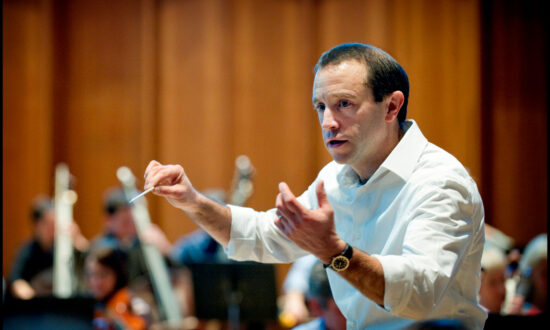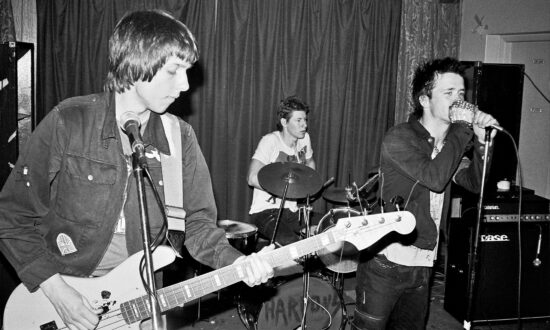Mozart’s best tale of seduction has just been turned into an office worker sitcom and the result is hilarious. Think of the television series The Halloween, or perhaps Utopia, with the wittiest, most tuneful music imaginable, and that’s roughly what Nicholas Cannon’s audacious take on The Marriage of Figaro is like.
The bumbling young valet Figaro morphs into a smart-suited, brimmingly confident office aide while his boss, Count Almavira, transforms into a power-hungry, philandering parliamentarian running for re-election. Their shenanigans and sexual exploits all take place in the Australian Houses of Parliament.
Armed with mobile phones and ambition, these characters and their cronies inhabit offices adorned by filing cabinets and photocopiers. Far removed from the romance of eighteenth-century Spain, this new production is entirely prosaic in look – opulent costumery and historical sets are out, and bland is in. But Cannon is clever. Through this contemporary Australian lens he finds an abundance of humour in The Marriage of Figaro that sets the opera alight.
It is funny, very relatable, and it works.
Not that the story itself makes more sense. The same incomprehensible tangle of intrigue, deceit and deception takes place: Beaumarchais’ 1784 play upon which it is based makes damned sure we can never follow its plot’s numerous twists and turns. But in Cannon’s hands, it all melts into rapturous comedy of the televisual kind.
Leading a sparky and vivacious cast is quite the most marvellous Figaro. Jeremy Kleeman, who memorably played Corcoran in HMS Pinafore in May, is a cheeky and brazenly quick-witted upstart, making each scene come alive with his sharp acting skills. To have a young Figaro like this truly transforms the opera, especially with the voice he possesses: generously warm-toned but smartly clipped in delivery, it is also absolutely faultless in technique. This young singer has the role totally sewn up.
Right up there too is Nicholas Lester. Owning vocal chords that reach to genuinely resonant subterranean lows, he is similarly terrific and makes an imposing Almavira who stops all around him by his intimidating presence.
To have these two equally outstanding male singers is like winning a double prize in the lottery. Then there’s Pelham Andrews: he caricatures the conniving role of Dr Bartolo with charm and magnetic allure.
Mozart’s wonderful opera could really be titled ‘The Marriage of Susanna’, because it is just as much about the fortitude of the Countess’s maid, Susanna, in resisting the lecherous Count and staying loyal to her fiancé, Figaro. In this role, soprano Jessica Dean has all the intelligence, tact and presence of mind to navigate her obstacles.
Singing most tenderly in “Deh, vieni, non tardar, o gioia bella” (Come now, delay not, lovely joy) in the final act, she has enough poise and beauty of voice to make this the expressive highpoint of the night. Behind her, a recreation of the Australian War Memorial’s Poppy Wall serves as a poignant reminder to fallen soldiers as she seeks refuge in this aria.
With her mellower soprano, Petah Cavallaro casts a sad, lonely figure as the sidelined Countess, while Cherie Boogaart plays up to the fickle character of Marcellina with the show’s most hysterically funny performances.
However, the most interestingly drawn role in this production is that of Cherubino, the page boy who is constantly smitten by women around him. Equally well up to the task vocally, Emily Edmonds is acutely insightful in this famous ‘trouser role’, actually redefining it as a transgender role by making no pretence about being female. Outfitted in punk jeans and Doc Martens, Cherubino is an outlier and the most original character, moving freely through the binary world of all the others.
There is as much theatre as music in Cannon’s perceptive production, which is exactly how one supposes Mozart meant The Marriage of Figaro to be. But down in the pit is, of course, where so much more of his magic is made. Tobias Ringborg directs the singers and orchestra with the tightest timing, and the Adelaide Symphony Orchestra has never sounded better with Mozart.
Delicious little crescendos in the overture are just the start. From there it is all agility, speed and exceptional lightness. This Swedish conductor, who was here for Madama Butterfly in 2019, brings the most finessed playing from the Adelaide Symphony Orchestra. What’s more, he plays all the recitatives on fortepiano with great panache.

Get InReview in your inbox – free each Saturday. Local arts and culture – covered.
Thanks for signing up to the InReview newsletter.
The choruses are brilliant, the sets and lighting nicely done, and the three hours of this opera fairly race by. This is not just a night at the opera, it is a night at the theatre – which perhaps, for Mozart lovers, says it all.
State Opera South Australia is presenting The Marriage of Figaro at Her Majesty’s Theatre until November 25.
Support local arts journalism
Your support will help us continue the important work of InReview in publishing free professional journalism that celebrates, interrogates and amplifies arts and culture in South Australia.
Donate Here




